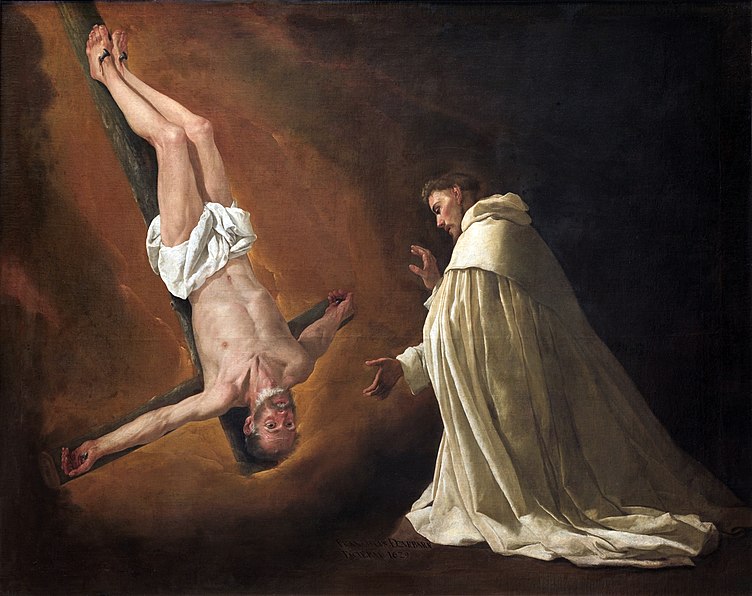SAINT peter, AFTER ZURBARÁN.
Sculpted and polychrome ivory.
Colonial. Hispanique-Philippine work of the 17th - 18th centuries.
Height. 22, Length. 20 cm.
VERY RARE CARVED AND POLYCHROME IVORY PIECE representing Saint Peter. Philippine work for the Mexican Market: 17th-18th century.
A VERY RARE SAINT PETER IN IVORY INSPIRED IN ZURBARÁN
This piece of ivory is an extraordinary example of the quality of the work of Asian artisans for the American and European markets during the Colonial period. It remained in the same Mexican family since its request until the beginning of the 21st century. The taste of Colonial aristocracy, politiciens and clergy men in the cities of Mexico, Guadalajara and Puebla gave birth to the production of pieces of art in ivory and porcelaine. During the Colonial period, the "Nao de China" or Manille Galleon bound for Acapulco linked the Philippines, under Spanish rule, to the Viceroyalty of the New Spain. 110 galleons crossed the Pacific ocean between 1565 and 1815. More tan 1,000 passengers participated in each trip, carrying to Europe, via Mexico, Asian treasures.
The iconography of our crucifix is one of the rarest that can be found in the market. It is not, as one could be lead to think, the figure of Christ, but that of Peter the apostle, crucified upside down at his own request, feeling unworthy to be crucified as his master. It can be noted that his waist cloth is not turned to fall towards his feet, but rather towards his head, thus indicating his martyrdom. In "The apparition of Saint Peter to Saint Peter of Nolasco", painted by Zurbarán in 1629 (Prado Museum, Madrid), one of the masterworks of the Spanish Baroque, Saint Peter Nolasco can be seen kneeling before the image of the tormented apostle, It is very posible that our very particular piece of ivory found its inspiration in the famous painting, and that it were ordered by a patrón named Peter, or Paul-Peter, whose festivity is remembered every June 29.
Text: Diego de Ybarra-Corcuera
The apparition of Saint Peter to Saint Peter of Nolasco

